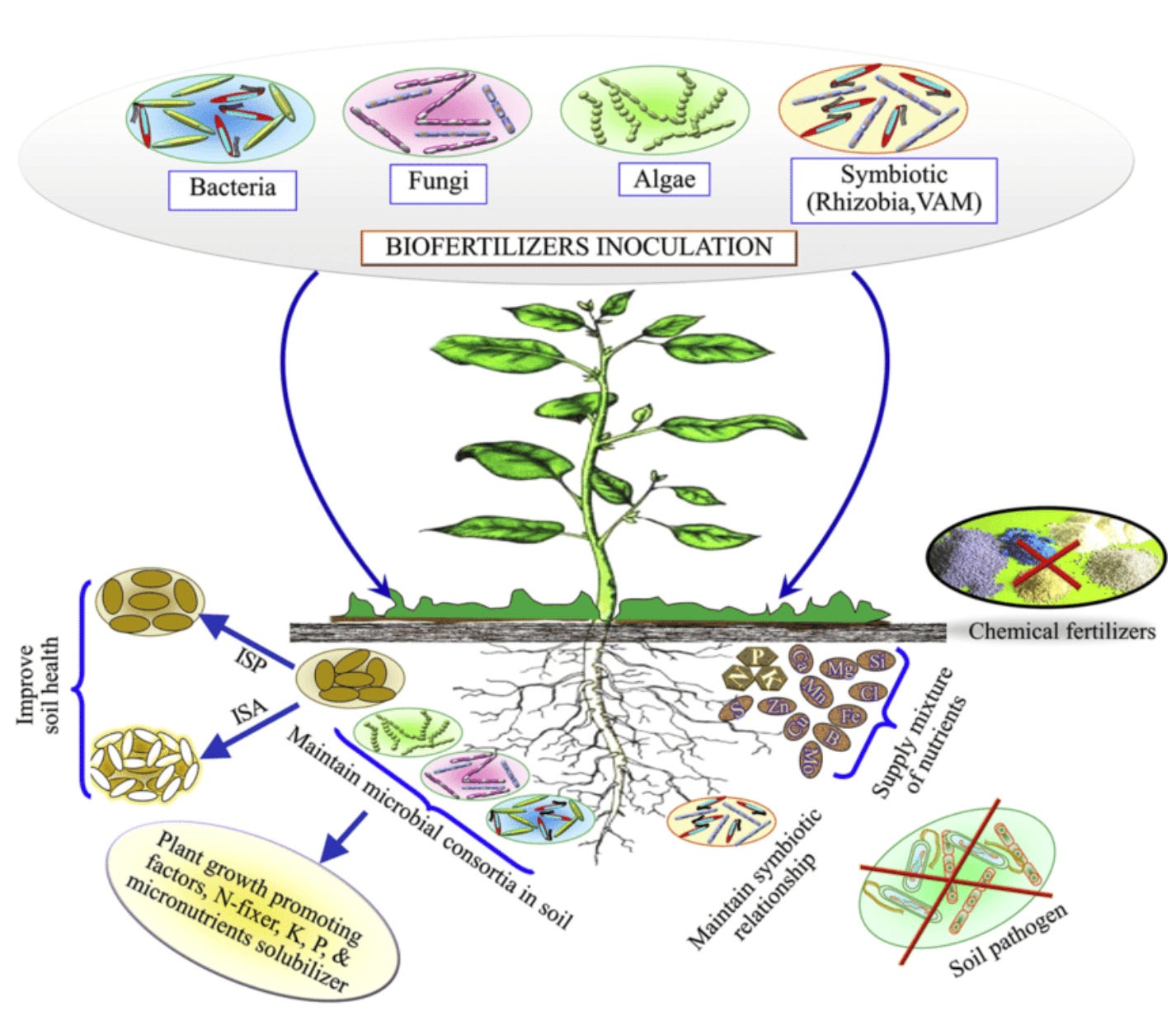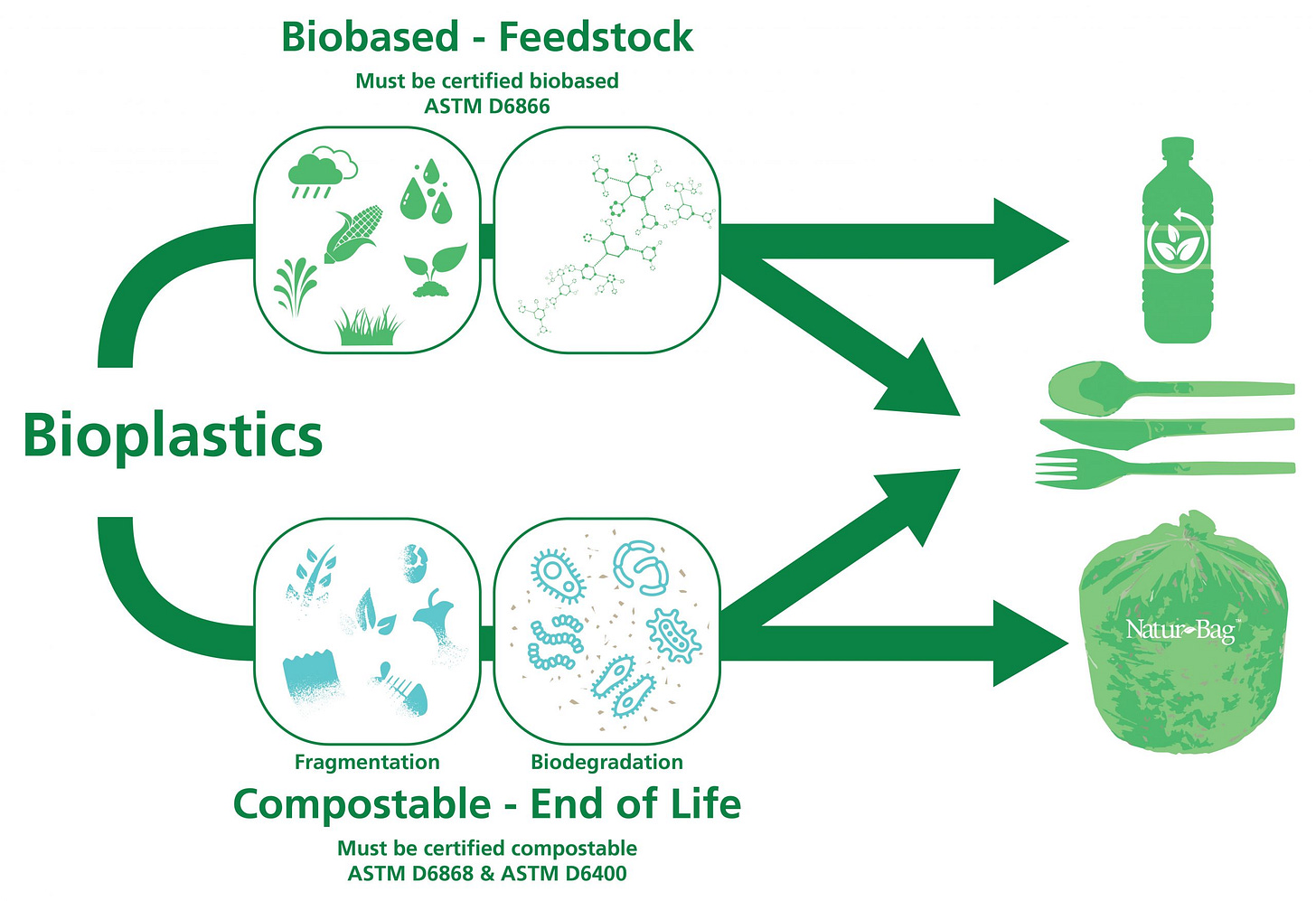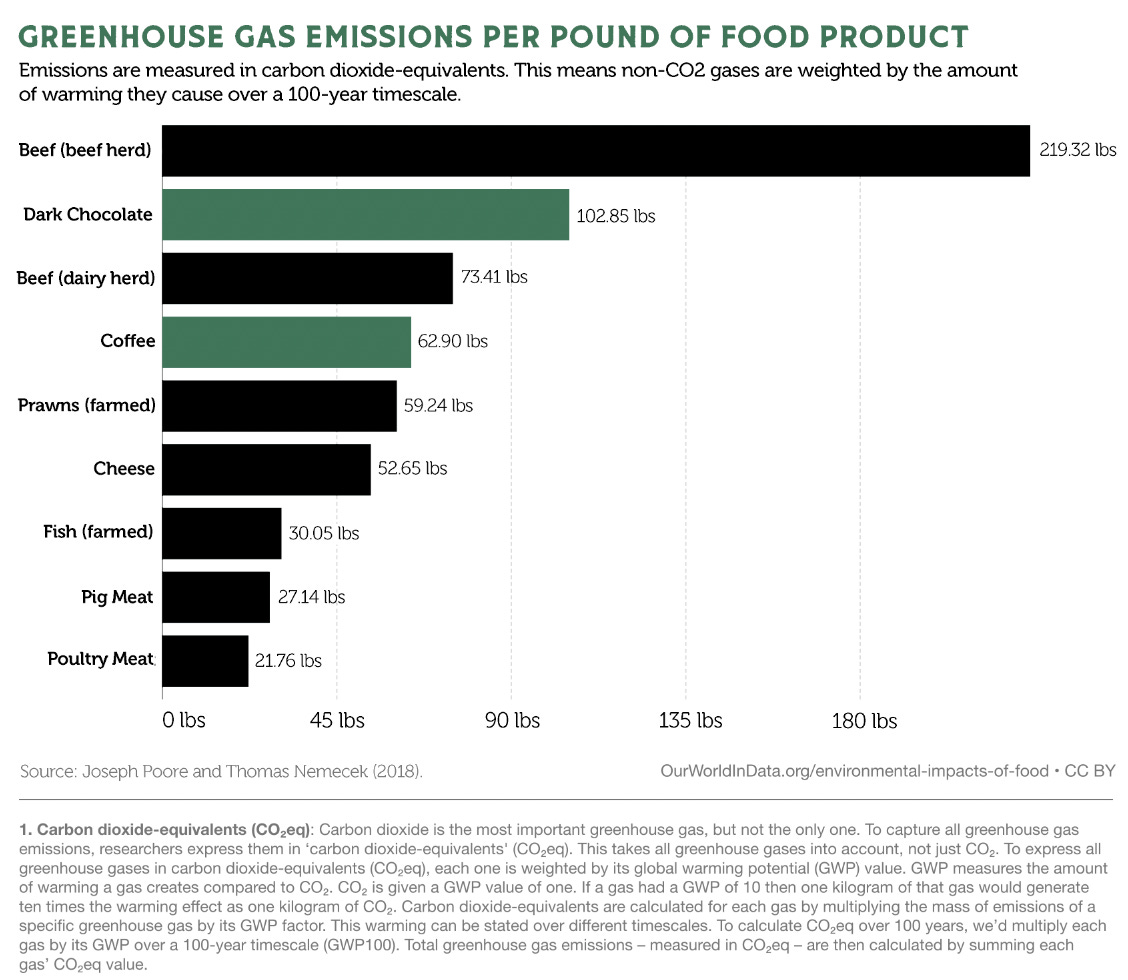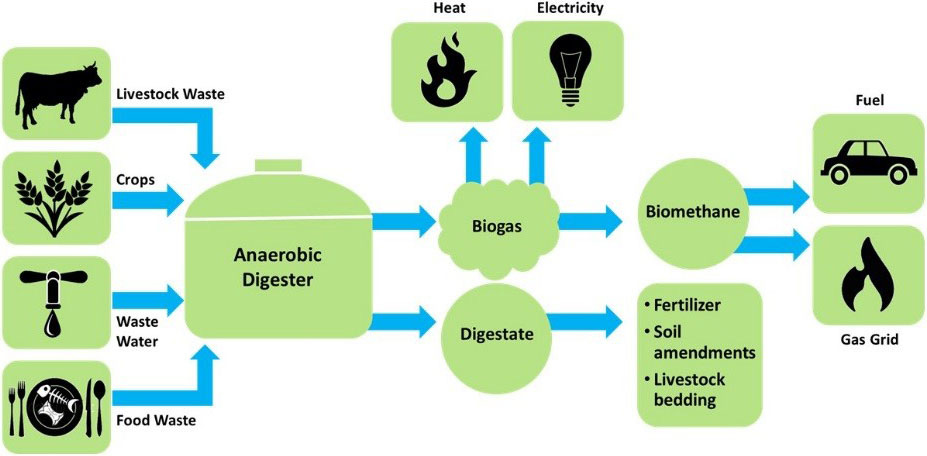Top 10 Most Impactful Bioproducts
Biomanufacturing could transform the economy, but what do we stand to gain from a climate perspective?
Despite being a trillion dollar industry already, most of biomanufacturing’s upside may still be ahead. It feels like we are at an inflection point again, twenty years after the biofuel boom (and arguable bust). Several governments in the past 18 months have been seriously investing again to push the boundaries of what’s possible with biomanufacturing. The White House, for example, announcing over $2Bn of funding in late-2022 to bolster the American biomanufacturing sector and enable commercialization of new, green end products.
However, it will take a lot more than that: to achieve a meaningful global transition to mass-market bioproducts, it will take a thousand-fold increase of fermentation production capacity and hundreds of billions in capital investment. So, what do we stand to gain from a climate perspective, by supporting the biomanufacturing sector as it grows out of the realm of pharma, speciality chemicals, and ethanol?
What are bioproducts?
The biomanufacturing industry promises a sustainable paradigm for producing goods, as opposed to petrochemical refinery, mining, (de)forestry, livestock, or direct agriculture. These conventional supply chains can be fraught, relying on non-renewable resources, exploitative practices, fragile systems, and/or serious externalities.
Instead, biomanufacturing offers to replace these conventional goods with similar-or-identical “bioproducts” produced microbially by fungal, algal, animal, or plant cells in modular fermentation tank systems called bioreactors or bioprocessing lines. The concept is not new, nor is the process (which resembles beer brewing), but the industry is booming due to efficiency advances in synthetic biology, automation, and bioinformatics — see the Fifth Industrial cellular agriculture primer.
Biomanufactured goods have the potential to be better in terms of greenhouse gas emissions, water use, biodiversity preservation, animal welfare, social justice, economic development, pollution, public health, supply chain stability, disease risk, or product quality. Though, note, that bioproducts are not inherently better than conventional. We should demand transparent processes, robust lifecycle analyses, and continual technical improvements from producers.
Biomanufactured goods have important applications in many sectors, including energy, medicine, cosmetics, construction, fashion, chemicals, food, and agriculture. These bioproducts are mostly fed biological feedstocks containing essential organic molecules like nitrogen, phosphorus, and—chiefly—carbon. Thus, biomanufacturing enables biological production of goods from biological inputs, resulting in a “bioeconomy”.
The Rankings
These rankings are based on GhG emissions associated with the conventional supply chains and therefore the climate opportunity for displacement with bioproducts. Any single item on this list could have a massive impact in its own right (assuming lifecycle analyses check out), and these rankings don’t speak to the techno-economic readiness of any products. Let’s imagine 10-20 years into the future and that all bioproducts are produced with similar systems and footprints.
This list does not include bioproducts that are directly used to make other bioproducts cheaper or better—such nucleases for synthetic biology yield improvements, GhG-metabolizing microbial chassis, or lignin-degrading enzymes for next-gen feedstock sources. If, for example, we commercialized enzymes to cheaply produce fermentation feedstocks from starchy agricultural waste rather than corn (dextrose) or sugarcane (sucrose), all other bioproducts could be made more cheaply and sustainably. Even though the impact of these enablers could be enormous, they’re harder to measure and more speculative. This list also does not include already-commercialized products like such as the many biopharmaceuticals.
10- Bioplastics
Although the most harmful aspects of plastics result from rampant environmental pollution, plastics production and disposal does also account for about 3-4% of all GhG emissions. Progressive regulation in Europe is driving replacement of single use plastics, often with biopolymers like PU, PA, PET, PHA, PLA, or PHB. These are mostly produced from algae or yeasts, and may or may not be biodegradable.
9- Casein Proteins
Dairy products are the most GhG-intensive protein sources—behind only beef, lamb, and farmed prawns— and account for about 4% of global greenhouse gas emissions. (See our previous landscape analysis on alternative cheese.)
Greener dairy alternatives, such as plant-based milk have achieved double-digit market penetration, but plant-based cheeses have achieved under 5% penetration due to inferior functionality. Casein proteins are billed as the missing ingredient of processed dairy alternatives due to their coagulating effect, and could be produced via precision fermentation with as little as 1% of the emissions per kg of protein compared to conventional dairy. A biomanufactured whey, an important but somewhat less functional dairy protein, is already available in various products in the US.
8- Cement
Construction of buildings and civil infrastructure is the third largest GhG emitting industry, with cement—the main element of concrete—itself accounting for 8% of global CO2. Cement’s main ingredient, calcium carbonate, is typically made from crushed and superheated limestone. However, companies are in the early stages of producing calcium carbonate from microalgae which can be grown in bioreactors or even open ponds with less energy (and mining).

7- Textile Fibers
The textile industry is one of the most polluting. Fashion items like apparel and footwear make up about 60% of textile use and are responsible for up to 10% of GHGs. The industry relies on emissive petrochemical and animal products like polyester, leather, and wool. Additionally, both the creation of textile dyes and the frequent and improper disposal of textiles are major sources of pollution.
Luckily, more sustainable sources, like organic cotton, are readily available and commercialization of textile bioproducts is rather far along. At least 50 producers are working on textiles from algae, mycelium, bioprocessed agriculture residues, bacterial cellulose, and plant cell cultures, plus use of microbes for producing both colorants and product end-of-life solutions.

6- Tropical “Beans”
Food production is responsible 26-34% of greenhouse gas emissions; and the only foods with higher GhG-emissions per kg than coffee and chocolate are beef and mutton. Climate change is also making it increasingly difficult to grow some of our favorite tropical crops like cacao, arabica coffee, and vanilla orchids. There’s also pressure to reform production methods which provide livelihoods to smallholder farmers (mainly in Africa and South America) but cause serious deforestation, biodiversity loss, and pose labor issues.
Companies can supplement these industries through precision fermentation to create high-volume functional proteins, fats, and aromatics from these crops, or can even create actual “bean” cells directly through plant cell culture (previously covered here).
5- Lipids
Lipids like palm oil, butter, omega-3 fatty acids, soybean oil, and petroleum are staples in the food system, but are all associated with deforestation and disruption of our natural carbon sinks. Oil crops cover 23% of global cropland, have a land-use footprint smaller only than meat, and are often concentrated in biodiversity hotspots.
Unfortunately, much lipid functionality is hard to replace with more sustainable or healthier oils like olive. Lipid production needs grow at least linearly with population growth, so solving the dietary “fat gap” is as important as solving the more-prominent protein deficit. Luckily, the alt fat space has been extremely promising, especially using cells that naturally produce lipids like algae and yeasts.
4- Mycoprotein
The UN Environment Program says that feeding 10 billion people by 2050 will require re-conceiving our entire food system. With animal protein responsible for 60% of that footprint, another quality protein source is critical. Distributed production of high-protein fungal or bacterial biomass for food could be a key tool to solving the global protein deficit and providing the developing world with a better protein production system that allows them to leapfrog past the Western animal factory farming paradigm.
Mycoprotein is a well-established food product, with Quorn in the UK producing economically viable and healthy fungi-based meat alternatives for decades. There are more microbial species on Earth than stars in our galaxy, and we are just starting to tap into that biological wealth, which could yield not only cheaper, safer, healthier protein sources, but also be grown on waste products like CO2, spent grains, or agricultural and food waste.
3- Animal Cells
Animals cells (i.e. CHOs) are traditionally a biomanufacturing chassis for biologics or regenerative medicine tissues, but are now being applied as a bioproduct for direct human or pet consumption (called cultivated or cell-based meat). Mammalian, avian, or piscine cells can be used as a functional ingredient in hybrid plant-based meats
Cultivated meat could provide a direct replacement for a large part of livestock or aquaculture emissions that alone comprise about 10% of the GhG footprint. The first cultivated meat products have been approved for sale in the US and Singapore and would have a major impact if the >100 startups in the space can solve production at scale.
2- Biogas
Electricity and heat production is the number one source of CO2 emissions globally, around 1/3rd (if you don’t include transport, around 1/5th itself). Power generation through biofuels and biogas is one of the most well-established and components of the bioeconomy, and technology improvements can help the segment reach it’s next phase after a long wait. Bioethanol and biodiesel production from corn and sugar (etc) deliver about 15% of US energy already, most in transport. Technology is advancing to allow use of feedstocks that don’t compete with the food system, such as agricultural or forestry residues, or municipal waste. For example, starchy waste products can be bacterially decomposed in closed-system digesters that create renewable natural gas sources, namely methane, or processed into high-energy chemicals like green methanol.
1- Biofertilizers
As it stands, nearly all bioproducts rely on agricultural feedstocks like corn, beet, or sugarcane, and so are a reflection of our agricultural practices. Our food system produces slightly less direct carbon emissions than the energy sector, but is the top source of highly-potent GhGs such as methane and nitrous oxide and actively destroys the most carbon sinks. Agriculture is the single largest component of our holistic anthropological footprint, with modern agriculture is heavily reliant on petrochemical fertilizers and pesticides that disrupt natural cycles and causing biodiversity-destroying nutrient cascades. The most important fertilizer is ammonia, typically produced from methane through an energy-intensive process called steam reformation—which requires ~100 bar of pressure and >400ºC temperature.
There has been a huge amount of research into replacing chemical farm additives. Farmers can apply microbes directly (or microbial bioproducts) that can multiply in the soil and fix nitrogen, carbon, and provide other biostimulant and pest-preventative benefits that can actually sequester carbon.

Honorable Mentions
Behind nearly every target bioproduct is a compelling impact story. Often in-line with best go-to-market practices, some products target more niche, novel, or opaque markets—or yield mostly non-GhG-related benefits—and so don’t make this top ten list. Those bioproducts that people are currently working on include ovalbumin, collagen, ivory, silk, wool, leghemoglobin, animal feed, dietary enzymes, lactoferrin, human milk oligosaccharide, flavors, pesticides, bioremediation inoculants, and antimicrobials.
There are also opportunities to not just displace unsustainable products, but to design entirely new functional biologics, materials, and foods. Together, the biomanufacturing industry can help us towards a bioeconomic system that is based on healthy natural concepts like circularity, regenerativity, and valorization. Is it worth the investment?
—
This is Fifth Industrial, a blog scouting emerging environmental biotechnologies and strategies for a regenerative economy. See the posts on plant cell culture, cellular agriculture, mycelium materials, synthetic silk, microbiomics, deep space food, alt cheese, alt protein CPG, biophilia, and agricultural innovation engines.
Special thanks to Georgia Lagoudas, Blake Byrne, and Jesse Lou for their contributions.
Please share or subscribe for free to support!
Sources:
https://ourworldindata.org/emissions-by-sector
https://ourworldindata.org/environmental-impacts-of-food
https://www.cacultured.com/the-chocolate-crisis
https://www.fastcompany.com/90777102/this-starup-is-using-microalgae-to-make-carbon-neutral-cement
https://www.frontiersin.org/articles/10.3389/fenvs.2022.973102/full
https://www.sciencedirect.com/topics/earth-and-planetary-sciences/bioethanol
https://www.eia.gov/energyexplained/us-energy-facts/#:~:text=Download%20image%20U.S.%20primary%20energy,energy%2013%25%20natural%20gas%2033%25
https://nicholasinstitute.duke.edu/sites/default/files/publications/Life-Cycle-Assessment-and-Carbon-Offset-Potential-for-Cultured-Milk-Protein.pdf
https://www.unep.org/news-and-stories/story/how-feed-10-billion-people
https://aeon.co/ideas/there-are-more-microbial-species-on-earth-than-stars-in-the-sky
https://www.ncbi.nlm.nih.gov/pmc/articles/PMC9083822/
https://ourworldindata.org/ghg-emissions-plastics#:~:text=Plastic%20production%20and%20disposal%20emits%20around%203%25%20of%20global%20emissions.&text=The%20most%20visible%20environmental%20impact,its%20contribution%20to%20climate%20change.
https://gfi.org/resource/cultivated-meat-lca-and-tea-policy-recommendations/
https://www.whitehouse.gov/briefing-room/statements-releases/2022/09/14/fact-sheet-the-united-states-announces-new-investments-and-resources-to-advance-president-bidens-national-biotechnology-and-biomanufacturing-initiative/
https://bluehorizon.com/insight/how-the-u-s-national-biotechnology-and-biomanufacturing-initiative-nbbi-accelerates-the-creation-of-a-new-sustainable-food-system/
https://www.cabdirect.org/cabdirect/abstract/20133417883












A good overview of most of the products that make up the bioeconomy